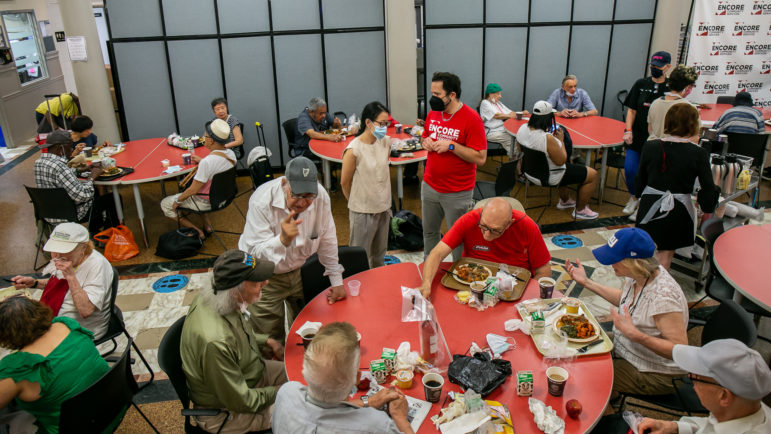Home renovation is a big hit on reality TV: The teary-eyed family returns from a weekend away to discover a new sofa set, a cleaned-out garage, a colorful playroom for the kids. But for residents of New York City public housing, the reality of renovation isn’t quite so cute.
In February, the New York City Housing Authority (NYCHA) announced plans to pump an unprecedented $2 billion into 129 developments around the city. The modernization will include exterior brickwork and roofing, new kitchens, boilers, elevators and intercoms.
Most residents agree that the rehab is needed, if not overdue. But at Walt Whitman Houses and Raymond V. Ingersoll Houses, two Brooklyn developments where prep work has started, tenants say it’s also brought them a mess of problems.
First, they say, it’s hard to know exactly what’s going on. The boxy brick buildings show few signs of renovation, other than minor scaffolding here and there. The one obvious construction site is a community center, rendered unusable for years. Meanwhile, tenants have been moving out steadily since 2003, at the direction of the Housing Authority.
“What’s the latest timeline?” asks Whitman resident and tenant organizer Enida Davis, 27. “They had this super rush and now nothing’s happening. It’s a fight to get any information.”
NYCHA spokesperson Howard Marder says the work is “basically” on schedule and is currently in a design phase. “This is a major undertaking,” he says. “We’ve got to do one thing at a time.”
The 1,526 families whose apartments are slated for overhaul were given three options: They could move to other apartments in their developments, move to other NYCHA complexes, or leave public housing entirely. The Housing Authority set up an onsite Relocation Assistance Unit and offers grants to cover moving expenses. Many tenants, however, still describe the process as chaotic and disruptive.
Kizzy Wilson, 27, says she waited for months, postponing job opportunities and school, before NYCHA found her family an apartment in Greenwood Houses in Flatbush. “Everything was in limbo,” she says. Then, in March 2004, her transfer was approved, suddenly leaving her just two weeks to move and forcing her to pull her son out of first grade midyear.
Monique Midyett’s family of six outgrew its three-bedroom apartment years ago, but she’s not yet eligible to move because her phase of the renovation hasn’t begun. Meanwhile, she says, her apartment is in disrepair. “We’ve got no closet doors, the ceiling is falling,” she says. “You’re doing apartments that no one is living in. What about us that are paying rent?”
On the flip side, some residents have dug in their heels. “I’m sick and disabled and don’t want to move,” says Edna Grant, 65, who has lived in Ingersoll since 1959. Like many older residents, she will likely be downgraded to a smaller apartment, whether she likes it or not.
To help ease residents like Grant into moving, NYCHA created tenant-run relocation committees. But there seems to be a disconnect between those who have the information and those who need it. “If [tenants] don’t come to the meeting,” admits Secretary Priscilla Douglas, “they wouldn’t know what was going on.”
Without proper information, word spreads informally–and unfounded rumors are rampant. “People have said that they sold the projects to MetroTech,” says Douglas. Others simply don’t trust assurances from the Housing Authority that they’ll be allowed to move back in.
Brooklyn’s public housing residents aren’t the only ones worried. In Staten Island, residents of Markham Gardens are protesting plans to raze the 360-unit development and replace it with mixed-income housing. The Housing Authority insists that most families who leave will be able to return, but it has not yet agreed to a one-for-one replacement of the demolished units.
Linda Couch, deputy director of the National Low Income Housing Coalition, says residents are right to be wary, given the history of public housing rehab. “They should make sure relocation and rehousing plans are as detailed and transparent as possible,” she says.
Even well-planned relocation will inevitably leave some people out, argues Susan Popkin, research associate at the nonprofit Urban Institute, who has studied the impact of HOPE VI reconstruction. “It’s an open secret that there are all kinds of people living in public housing who aren’t on the lease.”
Nearly every resident City Limits spoke with said the benefits of the renovation were outweighed by its human cost. “To be honest, I’m against the whole darn thing,” says Effie Jones, vice president of the Ingersoll tenant association. “We feel like we’re being pushed out of our homes.”








